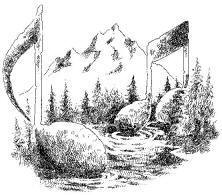|
You are reading the older HTML site
Positive Feedback
ISSUE
50
Notes of an Amateur:
Henze, Feldman, and Babbitt
Hans Werner Henze, Hommages. Ensemble Recherche. Wergo WER 6727. As a second generation modernist, German composer Hans Werner Henze (1926 - ), can easily fall through the musical cracks. Nothing he wrote is as new as the music of his immediate forbearers—he worked the ground already broken by Bartok, Webern, Schoenberg, and Berg. But especially his first five symphonies and his string quartets are strong, compelling modernist art. And so is his string trio, Trio in Drei Satzen (1998), the centerpiece of this new release of miscellaneous, mostly unrecorded Henze chamber music, selected and performed by the Ensemble Recherche. It is all the reason anyone should need for buying this album, though if you are drawn to the complex sonic flavor of (especially modernist) wind & string sextets, the Sonata for Six Voices (1983/84) should also please. The balance of the album is made up of nine short snacks for solo instruments (piano, cello, violin, viola) and a brief serenade for piano trio. These shorter works are all footnotes to Henze's major works, but each has a worthy life of its own and I'm grateful to have them. There are a great many better known and less interesting composers out there than Henze. If you've had enough modern romanticism or pastoralism lately, this music will clear your head brilliantly.
Clarinet Quintets. Morton Feldman, Milton Babbitt. Phoenix Ensemble; Mark Lieb, clarinet. Innova 746. Morton Feldman (1926-1987) is an abstract impressionist of modernist music. His canvasses are large and there is very little of detail on them; but what is there bears close attention. In the typical Feldman work, a few colors move and alter shade slowly before a flat background. In order to 'get' Feldman's music (and many abstract expressionist paintings) one must empty the mind of all mental expectations and preconceptions about what art has been, is, or is not, simply giving yourself up to whatever experience the music (or painting) induces. It tends not to be about something but simply to be something. If you have no Buddhism in you, if you are not willing to surrender your mind for anything, even for the duration of, in this case 39 minutes, this kind of music can come across to you as little more than aimless, repetitious noodling. But if you can, some of it can be moving. It is harder than looking at an abstract expressionist painting because it requires a longer attention (or inattention) span. Some Feldman pieces work for me, some don't. I am always willing to give him a try. And my clarinetist son has converted me to the appeal of both his instrument's rich raucous bark and smokey sweet birdsong; so this album seemed possible, especially with the crisper appeal of Milton Babbitt as a backup should the Feldman fail me. As it turned out, the clarinet makes this work, capturing our ears like the above mentioned bird, moving across a background provided by the four strings of the quartet, sometimes nearly disappearing as it draws back and doubles the violin. If you can deep distractions away, this work can be truly enjoyable. Milton Babbit (1916 - ) is one my favorite late high modernists. His music has a geometric quality to it. Art historians would say 'cubist.' In this representative work, we sense musical planes and lines moving about, intersecting one another. The presence of the different-in-kind voice of a clarinet among the four strings reinforces this effect, but Babbitt also works with the distinctly different sounds of the violin's high and low voices, the cello's bowed low voice and plucked middle range. That both Feldman and Babbitt bring painting to mind as a descriptive reference is not a coincidence. A great deal of what distinguishes their generation of modernism is its pursuit of space rather than narrative. We do not so much follow their music as watch it. The difference between these particular two is the quality of their pictures. Feldman gives us large, sparsely figured canvasses, where the few details are critical. Babbitt's composes pictures full of overlapping lines, ribbons, and planes. Both have the effect of clearing the air of previous generations of music, which is their principal interest and intent. System used for the audition: Audio Note CDT3 transport and Dac 4.1 Balanced Signature. Blue Circle FtTH hybrid integrated amplifier. Jean Marie Reynaud Cantabile Supreme loudspeakers. With Blue Circle BC6000 line conditioner. Audio Note Pallas and AN/Vx interconnects; Audio Note Lexus speaker cables. Bob Neill, in addition to being an occasional equipment and regular music reviewer for Positive- Feedback Online, is also proprietor of Amherst Audio in Amherst, Massachusetts, which sells equipment from Audio Note, Blue Circle, and JM Reynaud, among others.
|



